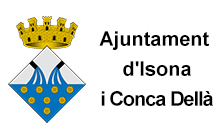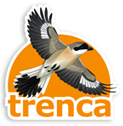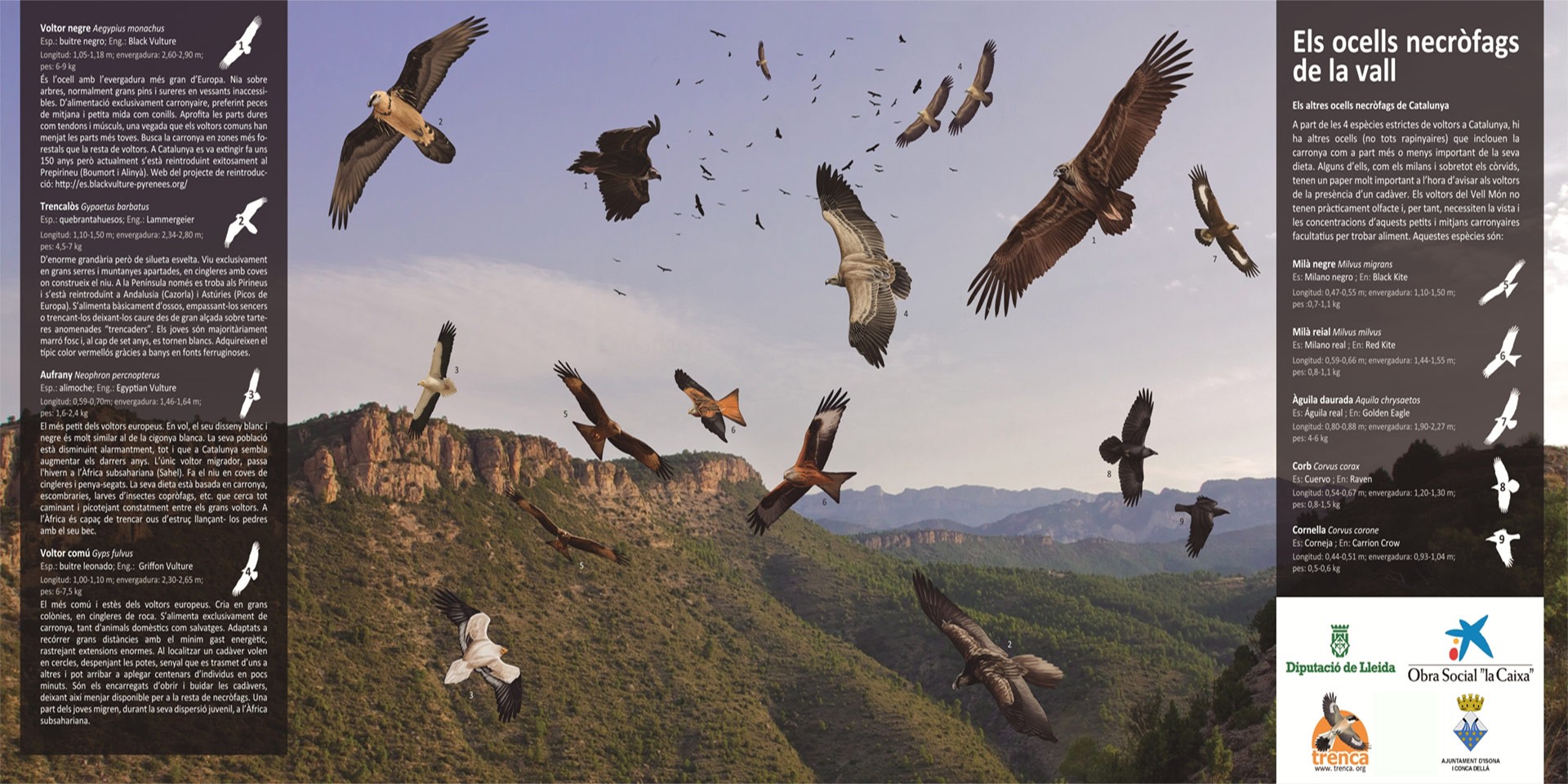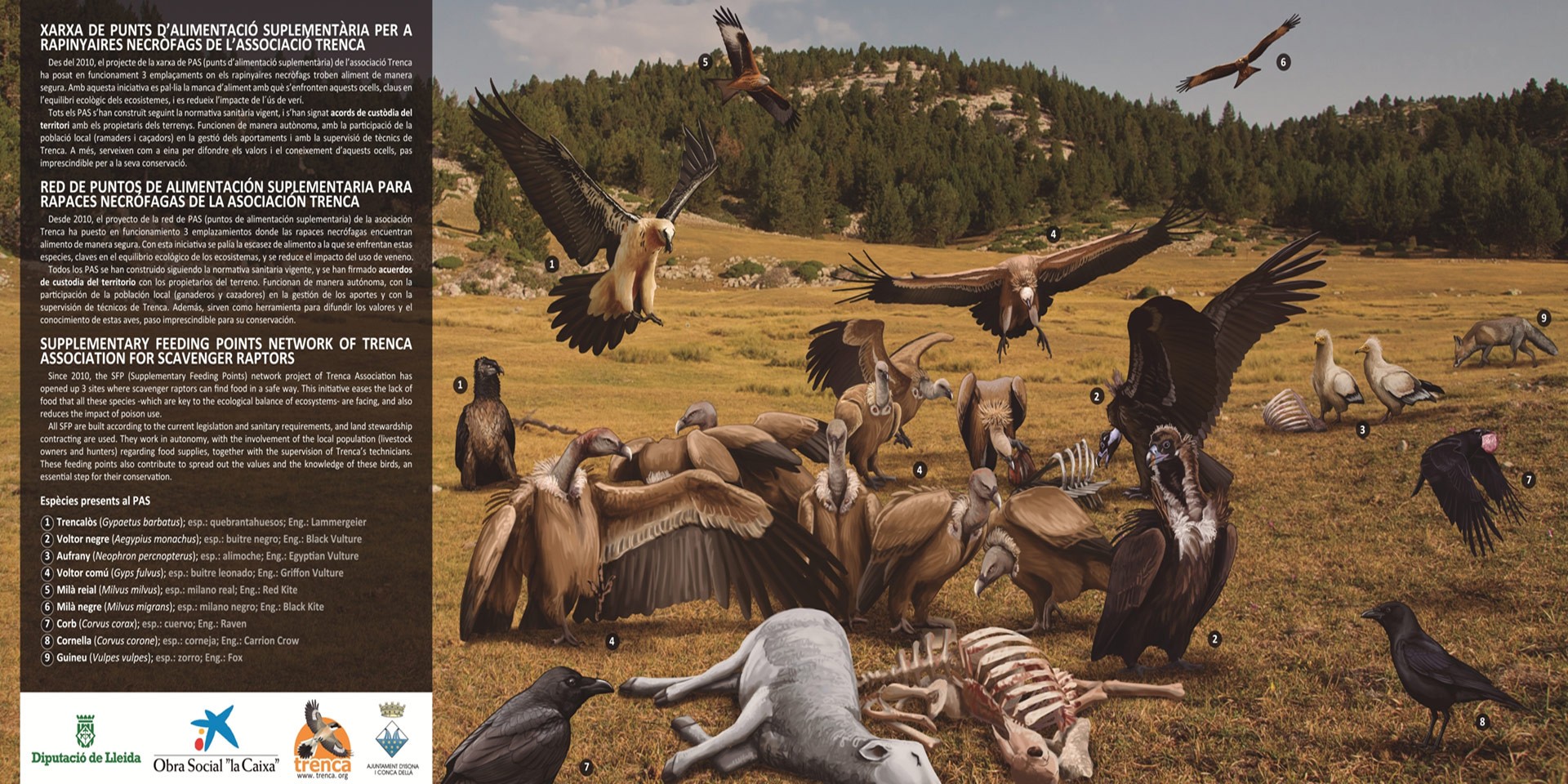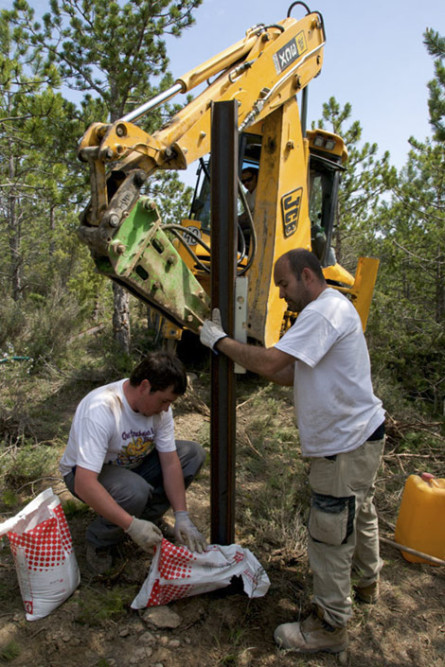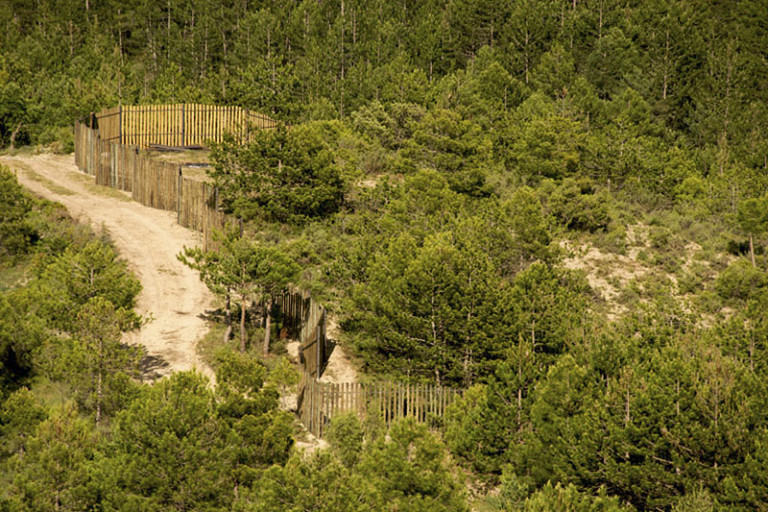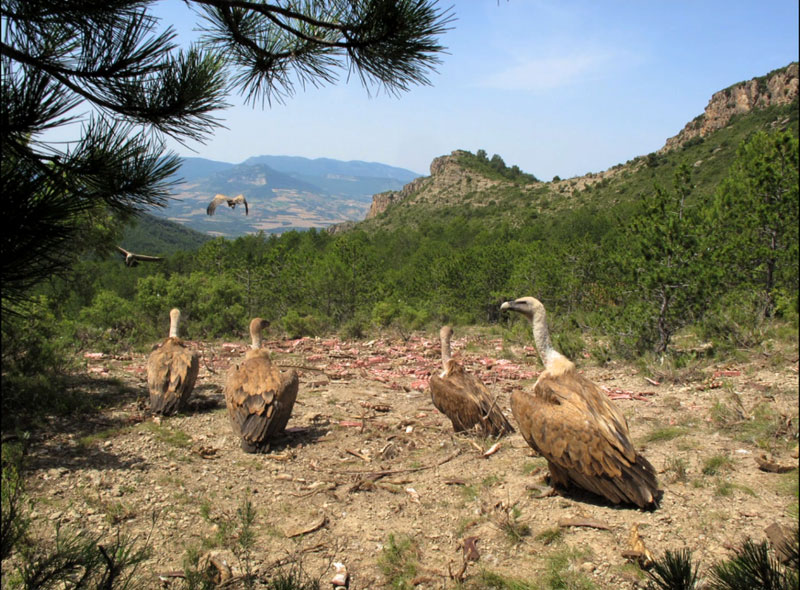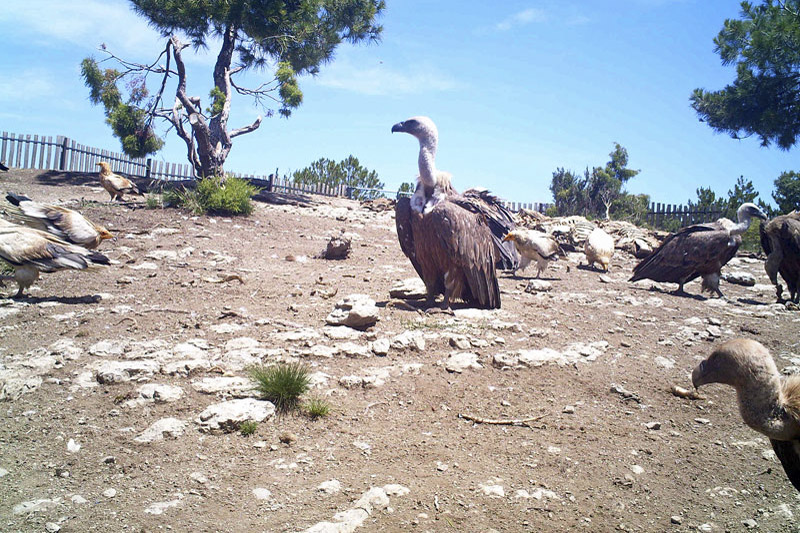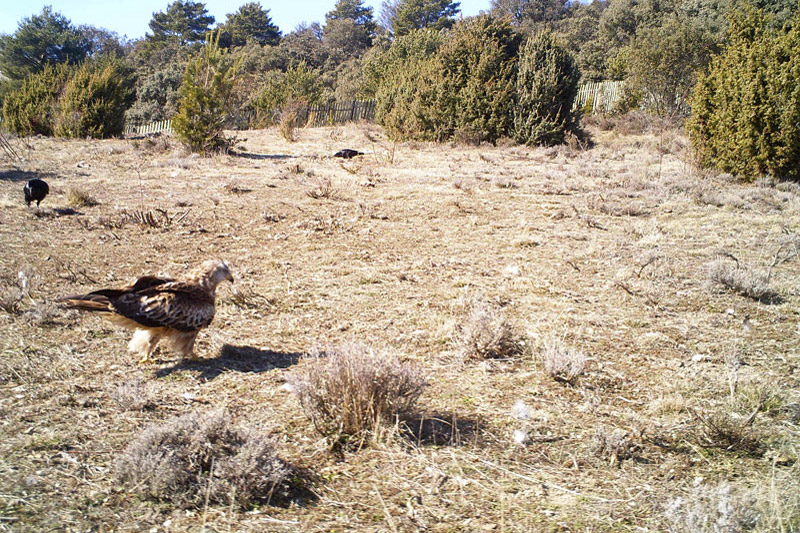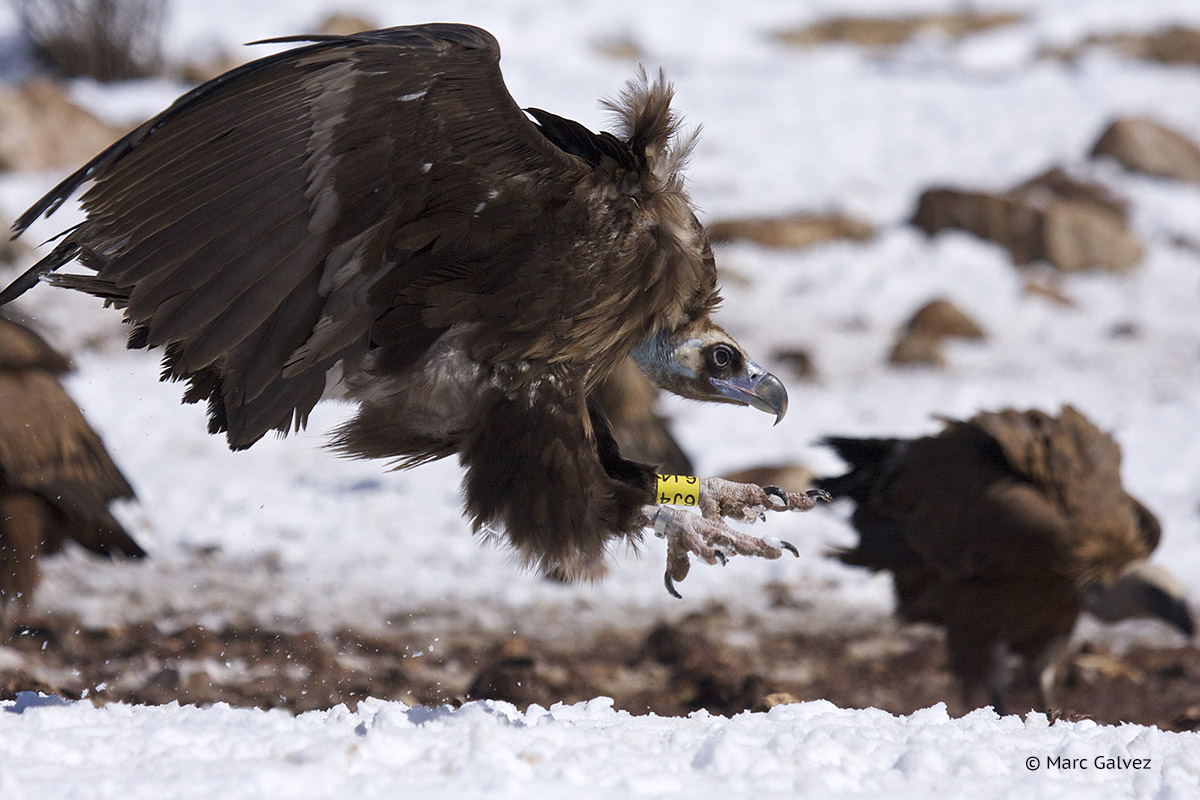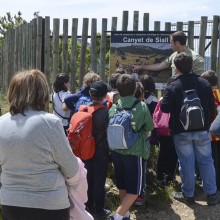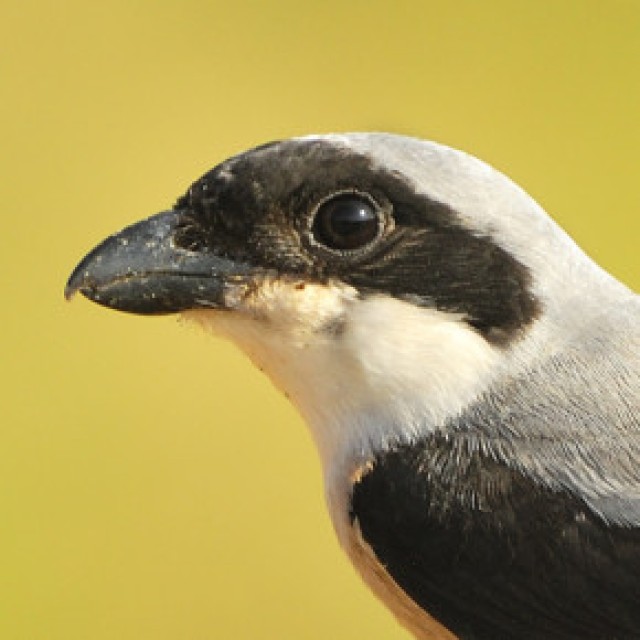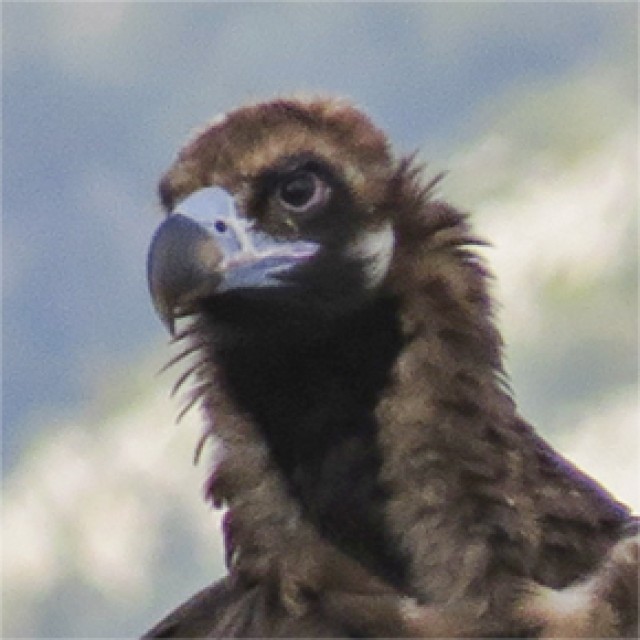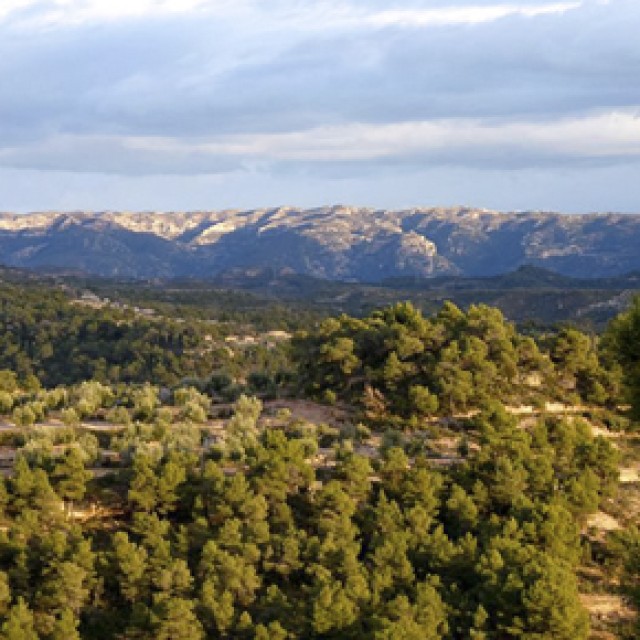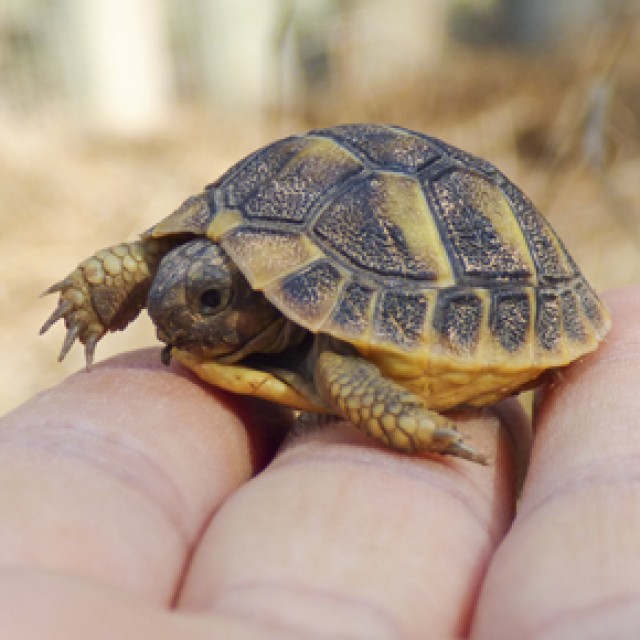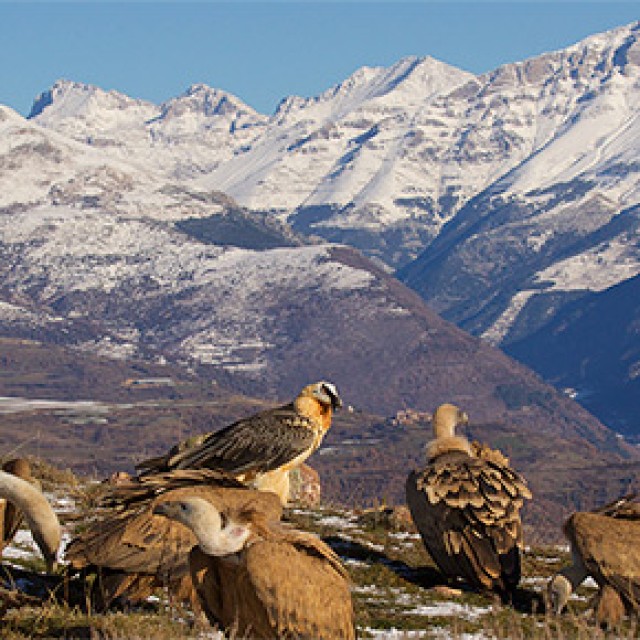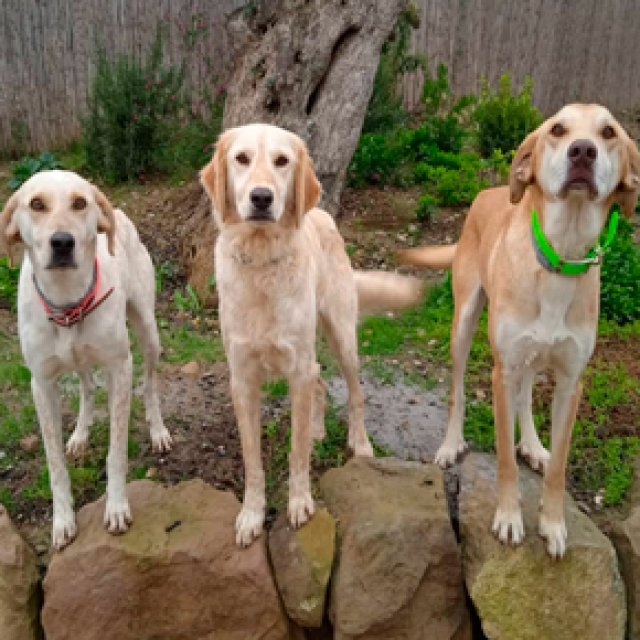Since the nineties, the Iberian populations of necrophagous raptors experienced an inversion in their decreasing trend thanks to specific conservation projects. Especially regarding the Bearded Vulture, Catalonia is one of the European reservoirs of the species with more than 33 territories and a high number of dispersing individuals. Nevertheless, all these positive results are currently in danger due to the legislation in force for removing the dead cattle from the land since the Bovine Spongiform Encephalopathy (BSE) crisis in 2001. The lack of food and the social alarm have taken, particularly the Griffon Vulture, to be considered a threat to the live cattle (with reports of attacks to animals that were still alive). This has brought back the placing of poisoned baits in the countryside, which mean a severe threat for scavenger avian species.
Since 2010, the project of the SFP (supplementary feeding points) network of Trenca Association has opened up 3 sites where scavenger raptors can find food in a safe way. These new SFPs are located in the Pre-Pyrenees and Pyrenees of Lleida (Catalonia, Spain):
- SFP of Siall (Isona i Conca Dellà), very close to the NHR of Boumort, Pallars Jussà regional district.
- SFP of Bassella, south of the Alt Urgell regional district.
- SFP of Cal Roger (Montferrer i Castellbò), north of the Alt Urgell regional district.
Building of the perimeter fence, in zig-zag, in one of Trenca’s SFPs. © Jordi Clariana
This initiative eases the lack of food that all these species –which are key to the ecological balance of ecosystem– are facing, and also reduces the impact of poison use.
Besides, the construction of the three SFPs is directly related to the reintroduction of the Black Vulture (Aegypius monachus) in the Pyrenees, mainly aimed to recover the Black Vulture as a breeding species in the mountain range (extinct in the second half of the XIX century).
Griffon vultures in a supplementary feeding point (SPF) of Trenca. © Jordi Clariana
All SFPs were built according to legal sanitary requirements. The legalization of the three SFPs was granted by the –at that time– Ministry of Natural Environment, Rural and Marine Affairs, through the Department of Natural Environment of the Catalonian Government (Direcció General de Medi Natural de la Generalitat de Catalunya).
Land stewardship contracts are done with the landowners, either communal land, as is the case of Isona i Conca Dellà, or private, as Bassella and Montferrer i Castellbò. The land stewardship contracting is a management and conservation tool for the natural, agricultural, landscape and/or cultural heritages of a territory. The agreements run for five years.
A consensus on the project has been reached by all the local stakeholders (municipalities, owners, farmers and hunters) from all areas of influence on the feeding stations. We have got their commitment for collaboration. Thus, the SFPs work in autonomy, with the involvement of the local population (livestock owners and hunters) regarding food supplies. Trenca’s technicians track all the food supplies and the overall functioning of the three SFPs.
This project is showing very positive results, since scavenging birds have been using the SPFs from the moment carrion was provided. With regards to the Black Vulture, the most used SFP by this species was Isona i Conca Dellà, due to its closeness to the mountains of Boumort. At least the presence of almost the whole catalonian colony has been detected, with daily numbers of up to 28 individuals and an average of 21 black vultures. This species is also using the other two SFPs.
Very often, the Red Kite, the Black Kite, the Egyptian Vulture and the Griffon Vulture use the three SFPs. Regarding the Bearded Vulture, we know for certain that this species has made use of the Isona SFP and the Montferrer SFP to feed. We have identified a Golden Eagle as well eating in the Montferrer SFP.
These feeding points also contribute to spread out the values and the knowledge of these birds, an essential step for their conservation. From 2012 (on September the 1st, the International Vulture Awareness Day) we organize an open day in the SFP of Isona, to watch how scavenging raptors feed. Moreover, many presentations in schools have been made talking on the SFP network and the Black Vulture reintroduction project.
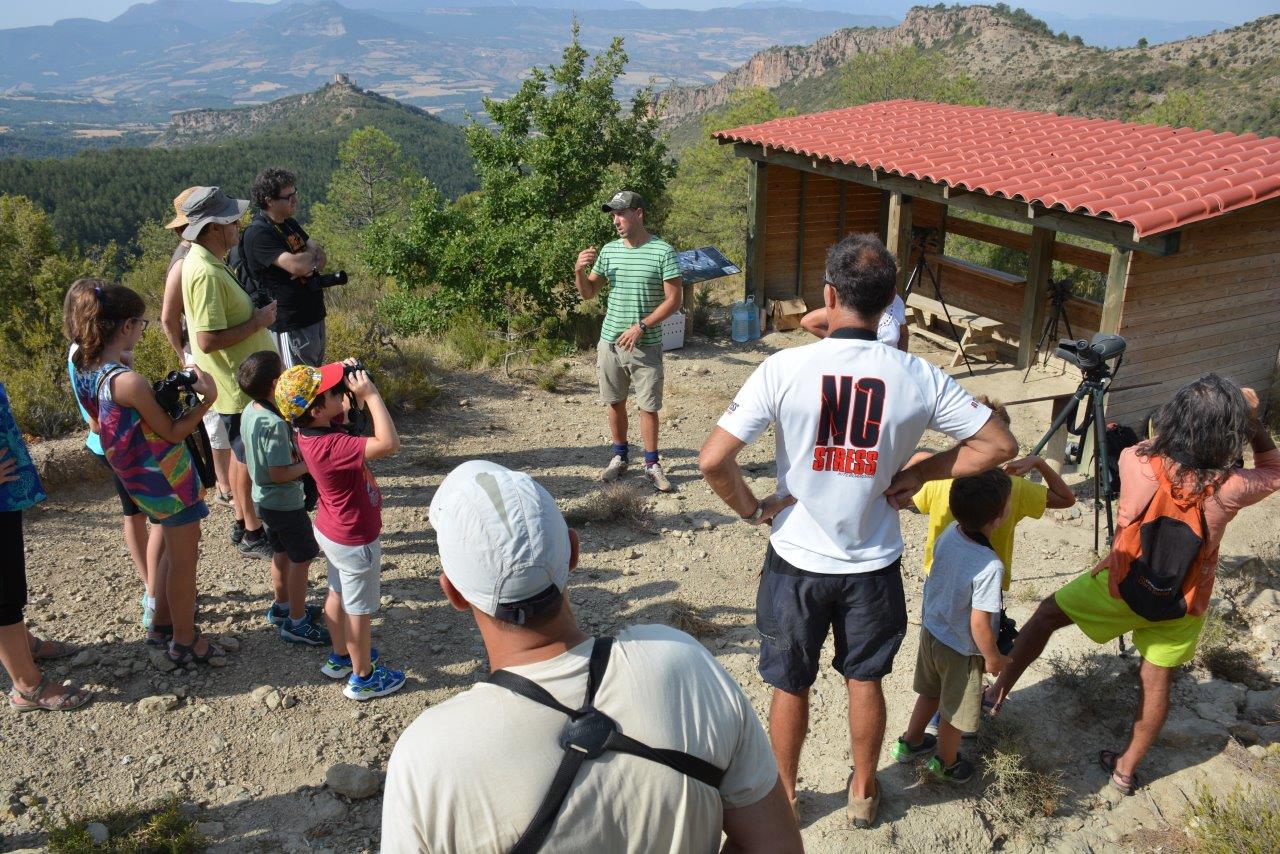
Explanation of the activity carried out on the occasion of the International Vulture Awareness Day by a technician of Trenca. © David Izquierdo

With the collaboration of:

